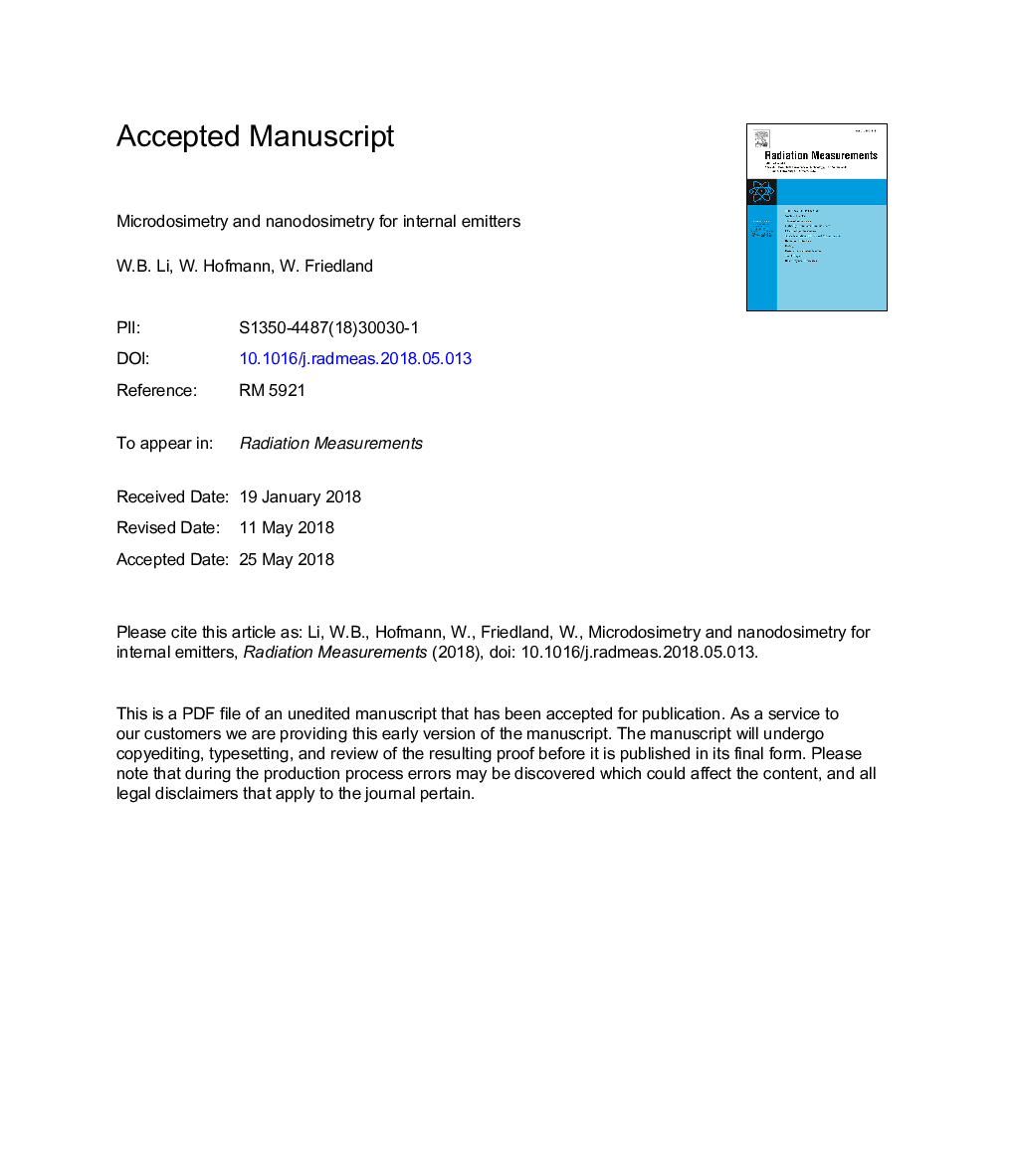| Article ID | Journal | Published Year | Pages | File Type |
|---|---|---|---|---|
| 8249742 | Radiation Measurements | 2018 | 28 Pages |
Abstract
In this review, the multiscale approach in radiation dosimetry in relation to biological effects is first briefly introduced. The need of dosimetry in microscopic regions, for example in cells, is then addressed, followed by a review of the basic microdosimetric quantities of internal emitters. The requirement of understanding the molecular biological effects of radiation leads to the dosimetric concept in the nanometer ranges, where the initial events produced at the molecular level cause the subsequent cellular and tissue effects that may lead to cancer. Track structure theory is particularly introduced in nanodosimetry for internal emitters. The relationship between the quantities in macroscopic dosimetry, e.g. absorbed dose, the microdosimetric quantities, e.g. specific energy and lineal energy, and the nanodosimetric characteristics, the track structures is inherently established in a derivational way. The significance of microdosimetric and nanodosimetric quantities in understanding and interpreting the mechanisms of radiobiological effects is addressed. Several applications of microdosimetry and nanodosimetry for internal emitters in radon and thoron progeny dosimetry and risk analysis, in targeted radionuclide therapy, in modelling of DNA damages and as a tool in the potential interpretation of dose-response relationship at low doses and dose rates are given. Finally, the potential future development of internal microdosimetry and nanodosimetry is outlined.
Related Topics
Physical Sciences and Engineering
Physics and Astronomy
Radiation
Authors
W.B. Li, W. Hofmann, W. Friedland,
